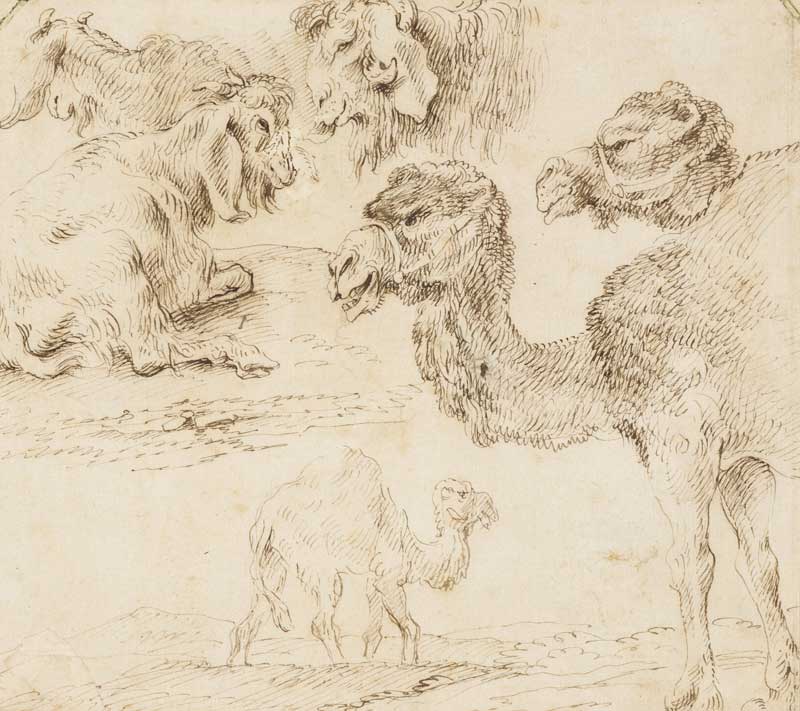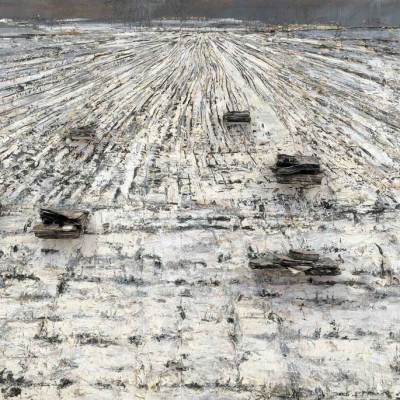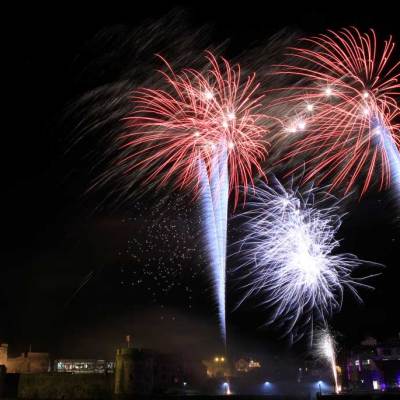Giovanni Benedetto Castiglione (1609–64) was neither a genius, nor has he been lost to history. He is, however, underrated. For this reason, ‘Castiglione: Lost Genius’, a survey of the Genoese artist’s works on paper at the Queen’s Gallery in London (until 16 March), seeks to redress the balance.
The Genius of Castiglione (1648), Giovanni Benedetto Castiglione Royal Collection Trust/© Her Majesty Queen Elizabeth II 2013

Unfortunately, this worthy effort may prove futile. There are several reasons why Castiglione is rarely mentioned in the same breath as Poussin, Rembrandt, Claude or Rubens. Firstly, he isn’t as good as them. He certainly wasn’t lacking in talent, but his career fails to adhere to the prescribed form of ‘progress’ we have come to demand from our canonical Old Masters.
Castiglione was a magpie artist, an absorber rather than a subversive. As such, his influences are so varied and pronounced that his corpus tends towards incoherence. Our disparagement of this studious diversity is perhaps the fault of our own flawed expectations, but such is the nature of the ivory tower we have built for ourselves, that Castiglione will likely remain on the peripheries of the public’s imagination.
The head of an oriental (late 1640s), Giovanni Benedetto Castiglione Royal Collection Trust/ © Her Majesty Queen Elizabeth II 2013

Individually, his experiments are often successful. His series of Oriental Heads from the 1640s are a fine tribute to Rembrandt. Likewise, his Aragonese-inspired Franciscan saints, from the mid 1650s, are full of all the drama, dynamism and pious suffering one would expect from a Zurbarán or Ribera. Even his second-rate Poussin impressions, such as Moses Striking the Rock (c. 1640), are proficient in the extreme.
But collectively, his career is somewhat less than the sum of its parts. Castiglione’s persistent restlessness betrays hidden insecurities. One oil sketch, Sacred and Profane Love (c. 1630s), is particularly fascinating for its unusual lack of bravura. This misguided attempt to emulate Titian exposes a rare lapse in self-confidence. The artist’s erratic, even arbitrary, marks hopelessly mistranslate Venetian sensuality. However, ‘to err is human’ and Castiglione’s vulnerability makes for an endearing change of pace. This was one shiny treasure he had to do without.
Two Fransciscan Saints in devotion (mid 1650s), Giovanni Benedetto Castiglione Royal Collection Trust/© Her Majesty Queen Elizabeth II 2013

The best works here are altogether less ambitious. Castiglione’s early Genoese drawings temper rustic charm with baroque sophistication. Shepherds with Animals (c. mid 1630s), for example, is particularly striking and instinctive. Made with confident, visceral pen strokes, both shepherds and livestock appear to have been rendered with tougher stuff than mere flesh and blood. Although somewhat colloquial, by the day’s standards, this gritty realism now feels remarkably modern. Indeed, the horseman to the far right of the scene could easily have been plucked straight from a Daumier sketch.
Castiglione’s popularity has waxed and waned since his death. A jack of all trades, his quixotic career now resides firmly in the shadows of his more illustrious contemporaries. Despite the Queen’s Gallery’s best efforts at rehabilitation, they may actually be partly responsible for Castiglione’s current ignominy. Purchased by George III in 1762, the Royal Collection houses the world’s largest and most significant array of the artist’s works on paper. Regrettably, though, the vast and amorphous treasure trove that constitutes the Royal Collection remains little known to the wider public.
Studies of dromedaries and goats (c. 1630), Giovanni Benedetto Castiglione Royal Collection Trust / © Her Majesty Queen Elizabeth II 2013

Although historically this may have been to the detriment of Castiglione’s reputation, his drawings are now revealed for what they are – a master class in the many facets of baroque. And, as far as I’m concerned, if the Queen’s Gallery continues to pull these kinds of interesting and surprising exhibitions out of their Mary Poppins-like bag, then the institution’s relative obscurity may prove to be its greatest asset.
‘Castiglione: Lost Genius’ is at the Queen’s Gallery, London, until 16 March.
Related Articles
Sheila McTighe reviews ‘Castiglione: Lost Genius’ in Apollo’s February issue
Royal Connections: collecting and the Royal Collection (Katy Barrett)



